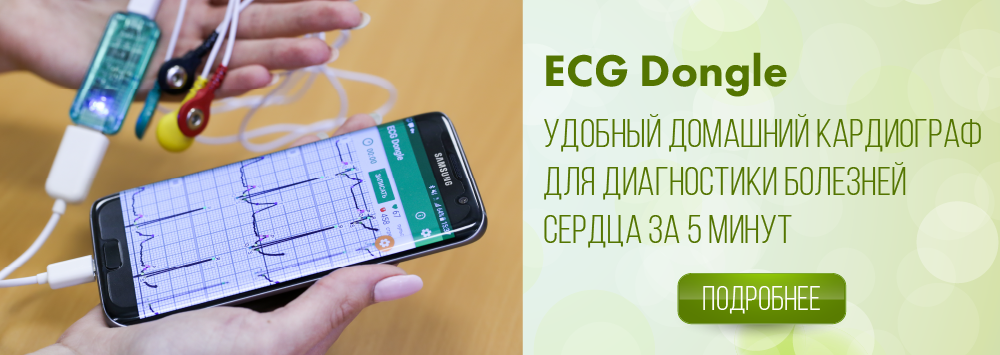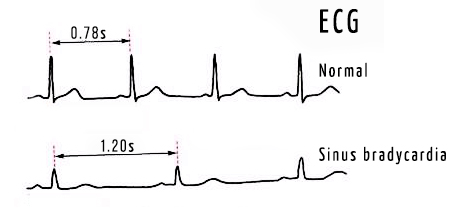Sinus bradycardia
Sinus bradycardia is a decrease in the heart rate to 59-40 beats per minute, provided that the correct sinus rhythm is maintained. Sinus bradycardia is associated with a decrease in the automatism of the sinus node. Sometimes sinus bradycardia is a variant of the norm. In healthy people, namely, in trained athletes at rest, the heart can contract at a frequency of 40-59 beats per minute. Most often, an increase in the tone of the vagus nerve leads to the development of sinus bradycardia.
The main diseases and conditions in which sinus bradycardia can occur:
- ifectious diseases (influenza, hepatitis, typhoid fever);
- hypothyroidism (lack of thyroid hormones leads to a slowdown in the conduction of an electrical impulse);
- hyperkalemia (excess of potassium in the body also provokes a slowdown in the conduction of the electrical impulse);
- myocardial infarction (the automatism of the sinus node is inhibited as a result of ischemia of the heart muscle);
- increased intracranial pressure due to craniocerebral trauma, brain tumor, encephalomeningitis, cerebral hemorrhage (due to irritation of the vagus nerve);
- taking certain medications (quinidine, digitalis, verapamil, atenolol, metoprolol);
- poisoning with chemicals (lead, nicotine).
Healthy trained athletes may not even notice that they have a lower heart rate, and may not make any complaints.
Symptoms of sinus bradycardia:
- dizziness, darkening in the eyes, fainting;
- fatigue;
- dyspnea;
- pain in the chest;
- general weakness.
This pathology can be detected using ECG Dongle [1], ECG Dongle Full [2] and «Serdechko» [3].


